Discover the epitome of interior design excellence in Delhi-NCR with our top-notch designers.
Don't wanna be here? Send us removal request.
Text
What is the Interior Designing?
Interior design is a multifaceted discipline that involves the art and science of enhancing the interior of a space to create a more aesthetically pleasing and functional environment.

It goes beyond just arranging furniture and selecting color schemes; it encompasses a deep understanding of architecture, human psychology, and the creative utilization of space.

Interior designers work with various elements, including color, lighting, furniture, fabrics, and spatial arrangements, to transform an empty space into a cohesive and harmonious living or working area.

Historical Evolution:
The history of interior design can be traced back to ancient civilizations where the layout and decoration of living spaces were driven by practical needs and cultural influences.

As societies evolved, so did the concept of interior design. The Renaissance period witnessed a shift towards more ornate and decorative interiors, showcasing craftsmanship and opulence.
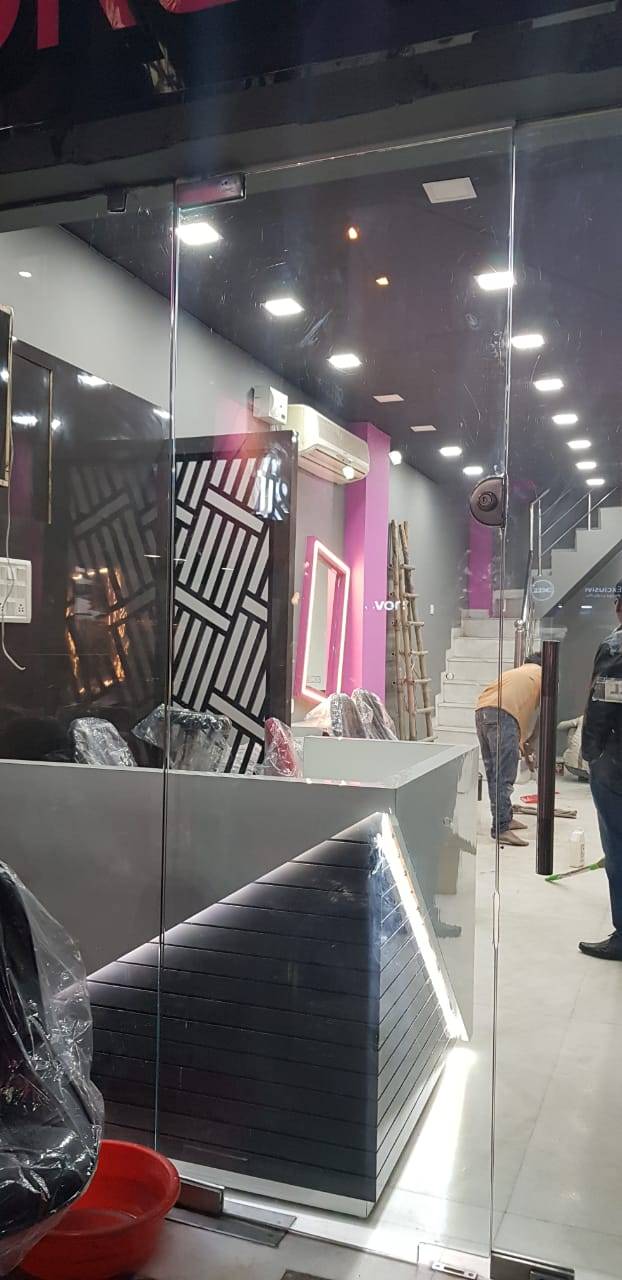
In the 19th century, the Industrial Revolution brought about mass production, making furniture and decor more accessible. The 20th century saw the emergence of various design movements, such as Art Deco, Modernism, and Postmodernism, each leaving its mark on interior design.
The Role of Interior Designers:
Interior designers play a crucial role in shaping the ambiance and functionality of a space.

They work closely with clients to understand their needs, preferences, and lifestyle, translating these into design concepts. Beyond aesthetics, interior designers also consider safety, accessibility, and environmental sustainability in their designs.

Their expertise extends to selecting materials, coordinating color schemes, and integrating elements that enhance both the visual appeal and the functionality of a space.
Key Elements of Interior Design:
Space Planning: The effective use of space is a fundamental aspect of interior design. Designers must consider the layout of rooms, the flow of movement, and the optimal placement of furniture and fixtures to create a balanced and functional environment.
Color Palette: Colors have a profound impact on the mood and atmosphere of a space. Interior designers carefully choose color schemes that align with the client’s preferences and the intended purpose of the space. Warm colors may evoke a cozy feel, while cool colors can create a calm and serene ambiance.
Furniture and Furnishings: Selecting the right furniture is essential for both comfort and style. Interior designers choose pieces that complement the overall design, considering factors such as scale, proportion, and functionality.
Lighting: Lighting is a critical element that can dramatically influence the perception of a space. Interior designers strategically plan the placement of lighting fixtures, taking into account natural light, task lighting, and ambient lighting to create a well-lit and inviting atmosphere.
Textures and Patterns: Incorporating a variety of textures and patterns adds depth and interest to a space. Whether through textiles, wallpapers, or materials, designers use textures and patterns to enhance the visual appeal of interiors.
Accessories and Artwork: The careful selection and placement of accessories, artwork, and decorative elements contribute to the overall aesthetic of a space. These details reflect the personality of the inhabitants and add a finishing touch to the design.
Technology Integration: In the contemporary era, technology plays a significant role in interior design. From smart home systems to innovative lighting solutions, interior designers integrate technology seamlessly into their designs to enhance convenience and efficiency.
The Design Process:
The interior design process typically involves several stages, each crucial to the successful completion of a project:
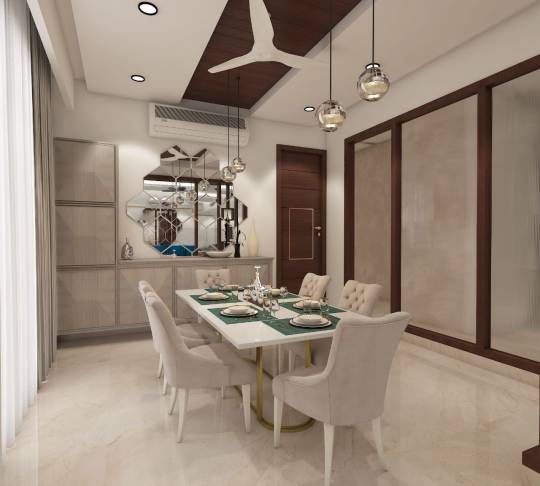
Initial Consultation: This phase involves meeting with the client to understand their requirements, preferences, and budget. It is an opportunity for the designer to gather information and establish a rapport with the client.
Concept Development: Based on the client’s brief, the designer develops a concept that outlines the overall theme, color scheme, and design direction. This stage may involve creating mood boards, sketches, or 3D renderings to visually communicate the proposed design.
Space Planning: The designer creates a detailed plan for the layout of the space, considering factors such as traffic flow, furniture arrangement, and functional zones.
Material and Furniture Selection: This stage involves choosing materials, finishes, and furniture that align with the design concept. Designers consider both aesthetics and functionality, ensuring that selected items meet the client’s needs.
Implementation: Once the design is finalized, the implementation phase begins. This includes coordinating with contractors, overseeing construction or renovation work, and managing the installation of furnishings and decor.
Finalization: The designer conducts a final walkthrough to ensure that every detail is in place. This may involve making any necessary adjustments and addressing any issues that arise during the implementation phase.
Client Approval: The completed project is presented to the client for approval. Client feedback is essential, and revisions may be made based on their input.
Project Completion: With client approval, the project is considered complete. Interior designers may provide additional services, such as maintenance recommendations or assistance with the arrangement of personal belongings.
Challenges and Trends:
Interior designers face various challenges, including staying updated with evolving design trends, working within budget constraints, and addressing the unique needs of each client. Additionally, environmental sustainability has become a growing concern, leading to a greater emphasis on eco-friendly design practices.
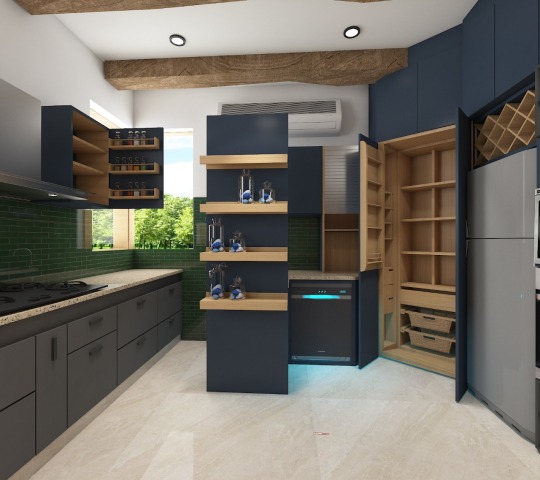
Several trends have shaped the field of interior design in recent years. Minimalism, characterized by clean lines and a focus on simplicity, has gained popularity. Biophilic design, incorporating elements of nature into interiors, has also become a significant trend, promoting well-being and connection to the environment.

The rise of smart homes has influenced interior design, with designers integrating technology seamlessly into their projects. From automated lighting systems to smart appliances, the incorporation of technology enhances both the functionality and efficiency of modern living spaces.
Educational and Professional Pathways:
Becoming an interior designer typically involves formal education and practical experience. Many designers hold a bachelor’s degree in interior design, architecture, or a related field. Some pursue advanced degrees or certifications to specialize in particular areas of design, such as sustainable design or healthcare design.

Conclusion:
Interior design is a dynamic and evolving field that combines creativity, technical expertise, and a deep understanding of human behavior. It has a profound impact on the way people experience and interact with their living and working spaces.

From historical influences to contemporary trends, interior design continues to shape the aesthetic and functional aspects of the built environment.
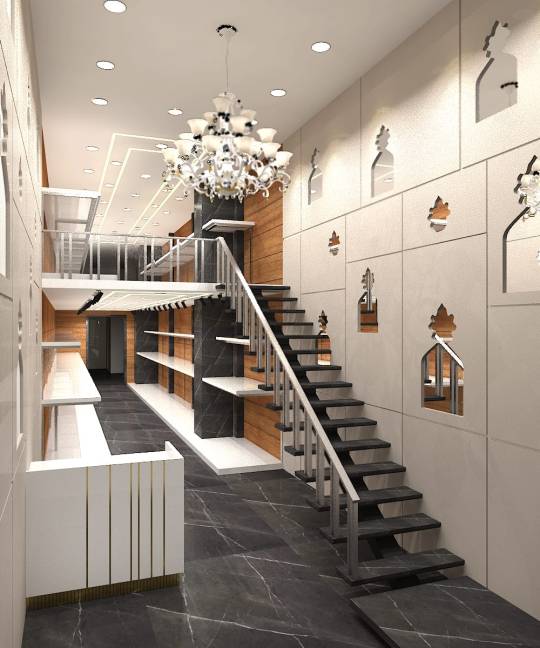
As society evolves and individuals seek personalized and functional spaces, the role of interior designers remains pivotal. The ability to transform an empty room into a well-designed, harmonious environment requires a unique blend of artistic flair, technical proficiency, and a commitment to understanding and meeting the needs of clients.
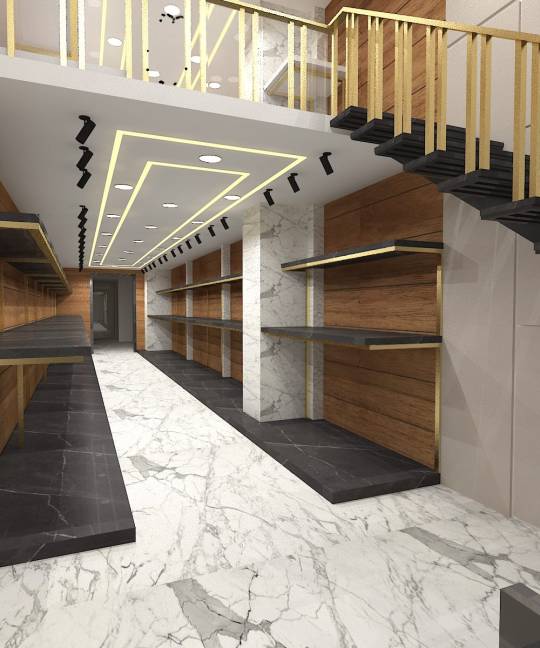
Whether creating a cozy home, a productive office, or a vibrant commercial space, interior designers contribute to the creation of environments that enhance the quality of life and reflect the unique personalities of those who inhabit them.
#architecture#interior design#interiors#luxury home#modern home#home interior#home decor#home design#decor#home#interior decor#interiors design#interior architecture#interior accessories#interior door#interior decorating#interior decoration
4 notes
·
View notes
Text
Which Company is Best for Interior Designers in India?
Interior design is a crucial aspect of creating aesthetically pleasing and functional spaces, be it homes, offices, or commercial establishments. In India, a booming economy and a growing emphasis on lifestyle have led to an increased demand for professional interior design services.

With numerous companies offering their expertise in this field, it becomes essential to evaluate and identify the best among them. This article aims to guide readers through an exploration of the top interior designing companies in India, considering factors such as reputation, expertise, client satisfaction, and innovative design approaches.
Livspace:
Livspace has emerged as a leading player in the Indian interior design industry. Founded in 2012, the company has garnered widespread recognition for its innovative designs and personalized approach. Livspace offers end-to-end interior design solutions, including furniture, decor, and project management. The company’s emphasis on technology, coupled with a team of skilled designers, has positioned it as a preferred choice for many homeowners and businesses.
Pepperfry:
Pepperfry, initially known for its online furniture retail platform, has expanded its services to include interior design solutions. The company boasts a vast collection of furniture and home decor items. Its interior design services focus on creating stylish and functional spaces. Pepperfry’s advantage lies in its wide range of products and the ability to integrate them seamlessly into diverse design concepts.
3. SGK Interioo
In the dynamic landscape of the Indian interior design industry, SGK Interioo has risen to prominence as a frontrunner. Established in 2009, the company has earned extensive acclaim for its inventive designs and client-centric methodology. Specializing in comprehensive interior design solutions, SGK Interioo encompasses services ranging from furniture and decor to efficient project management.
Its strategic integration of technology, alongside a proficient team of designers, has established SGK Interioo as the favored choice for numerous homeowners and businesses alike. SGK Interioo stands as a beacon of excellence in the Indian interior design landscape. Founded in 2009, the company has seamlessly blended innovation, technology, and a personalized touch to create spaces that captivate and inspire.
Whether it’s a residential haven or a commercial establishment, SGK Interioo’s end-to-end solutions and commitment to client satisfaction position it as a trailblazer in the industry. For those in pursuit of unparalleled interior design experiences, SGK Interioo stands out as a reliable and visionary partner.
Godrej Interio:
With a legacy spanning decades, Godrej Interio is a trusted name in the Indian furniture and interior design industry. The company’s expertise lies in creating contemporary and ergonomic designs that cater to both residential and commercial spaces. Godrej Interio is known for its commitment to quality and sustainability, making it a preferred choice for those seeking timeless and eco-friendly interior solutions.
Urban Ladder:
Urban Ladder is a prominent player in the online furniture and interior design space. Known for its modern and chic designs, Urban Ladder offers a range of furniture and decor items. The company’s interior design services focus on providing personalized solutions that align with the client’s preferences and lifestyle. Urban Ladder’s user-friendly platform and transparent pricing have contributed to its popularity.
Foyer2Attic:
Foyer2Attic is a boutique interior design firm that has gained recognition for its bespoke designs and attention to detail. The company takes pride in creating unique and customized spaces tailored to the client’s personality and preferences. Foyer2Attic’s commitment to delivering high-quality craftsmanship and its collaborative approach with clients make it stand out in the competitive interior design landscape.
Design Cafe:
Design Cafe has positioned itself as a one-stop solution for all interior design needs. The company offers a comprehensive range of services, including modular kitchens, furniture, and decor. Design Cafe’s expertise lies in creating contemporary designs infused with functionality. Their use of 3D technology allows clients to visualize and customize their spaces before the actual execution, enhancing the overall customer experience.
Morph Design Company:
Morph Design Company, founded by interior designer and architect Anjum Jung, is renowned for its luxurious and elegant designs. Specializing in high-end residential and commercial projects, Morph Design Company has left an indelible mark on India’s interior design landscape. The firm’s commitment to creating timeless and sophisticated spaces has garnered acclaim both nationally and internationally.
Purple Backyard:
Purple Backyard is a design studio known for its fresh and vibrant approach to interior design. The company focuses on creating lively and contemporary spaces that reflect the client’s personality. Purple Backyard’s portfolio includes a diverse range of projects, from residential homes to commercial spaces, showcasing its versatility and creativity.
The Karighars:
The Karighars is a Bangalore-based interior design firm known for its expertise in creating luxurious and tasteful interiors. The company’s design philosophy revolves around blending traditional Indian aesthetics with modern functionality. The Karighars’ meticulous attention to detail and commitment to delivering timeless designs have earned them a strong reputation in the industry.
Huzzpa:
Huzzpa is a design and build firm that has gained recognition for its turnkey interior solutions. The company focuses on creating spaces that are not only visually appealing but also highly functional. Huzzpa’s team comprises architects, interior designers, and project managers, ensuring a holistic approach to every project. The firm’s commitment to transparency and timely delivery sets it apart in the competitive market.
Factors to Consider When Choosing an Interior Design Company:
Portfolio and Style:
Evaluate the company’s portfolio to ensure they have experience in the type of project you are undertaking.
Consider their design style and whether it aligns with your personal preferences.
Client Reviews and Testimonials:
Look for reviews and testimonials from previous clients to gauge the company’s reputation and client satisfaction.
Check online platforms and social media for unbiased feedback.
Expertise and Specialization:
Consider the company’s expertise and whether they specialize in residential, commercial, or both.
Check if they have experience in handling projects of similar scale and complexity.
Technology Integration:
Assess whether the company utilizes technology such as 3D modeling and virtual reality to enhance the design and visualization process.
Technology integration can improve communication and help in better understanding the final outcome.
Budget and Pricing:
Clearly discuss your budget with the interior design company and ensure transparency in pricing.
Understand the payment structure and any additional costs that may arise during the project.
Project Management:
Inquire about the company’s project management approach and how they handle timelines and deadlines.
Effective project management is crucial for a smooth and timely execution of the design plan.
Sustainability Practices:
If sustainability is a priority for you, inquire about the company’s approach to eco-friendly and sustainable design practices.
Many reputable firms now integrate sustainable materials and practices into their designs.
Collaboration and Communication:
Assess the company’s communication style and how collaborative they are with clients.
A transparent and open line of communication is essential for a successful partnership.
Conclusion:
Choosing the best interior design company in India requires careful consideration of various factors, ranging from their design style and portfolio to client reviews and budget alignment. Each of the mentioned companies brings its unique strengths to the table, catering to different tastes and preferences. It’s essential to conduct thorough research, communicate effectively with the design firms, and make an informed decision based on your specific requirements.

Remember that the best company for interior designing in India ultimately depends on your individual needs, whether you seek modern minimalism, traditional elegance, or a blend of both. By taking the time to explore and evaluate these top companies, you can embark on your interior design journey with confidence, knowing that your chosen firm aligns with your vision and can turn your space into a personalized masterpiece.
1 note
·
View note
Text
Is Interior Design a Good Business?
the demand for professional interior designers has witnessed significant growth. This raises the question: Is interior design a good business? In this comprehensive analysis, we will delve into various aspects of the interior design industry to evaluate its potential as a lucrative and sustainable business venture.
Several key factors contribute to the sustained demand for interior design services, making it a potentially lucrative business.
a. Lifestyle Changes:
As societal norms evolve, individuals are placing a greater emphasis on personal expression and unique living spaces. The desire for customized and aesthetically pleasing interiors has become a driving force in the interior design industry.
Opportunities in Specialized Segments:
Interior design is a broad field that offers numerous specialized segments, each presenting unique business opportunities.
a. Residential Interior Design:
Designing homes is a primary focus for many interior designers. From small apartment makeovers to luxury home designs, catering to the residential market offers a steady stream of projects.
Staying abreast of design trends and incorporating them into projects is vital. Designers who fail to adapt to changing preferences may find it challenging to attract and retain clients.
Education and Skill Requirements:
To succeed in the interior design business, individuals need a combination of education, skills, and creativity.
a. Education:
While formal education is not a strict requirement, many successful interior designers hold degrees in interior design or related fields. Specialized education provides a foundation in design principles, spatial planning, and industry knowledge.
b. Creativity and Vision:
Creativity is at the core of interior design. Successful designers possess a keen eye for aesthetics and the ability to envision unique and innovative design concepts.
c. Technical Proficiency:
Proficiency in design software, knowledge of construction principles, and an understanding of building codes are essential technical skills for an interior designer.
d. Networking and Marketing:
Building a successful interior design business requires effective networking and marketing. Establishing connections with suppliers, contractors, and real estate professionals can lead to valuable collaborations and client referrals.
Licensing and Regulations:
In many regions, interior designers are subject to licensing requirements and regulations. Understanding and complying with these regulations is crucial for operating a legitimate and successful interior design business.
a. Licensing:
Some jurisdictions require interior designers to obtain a license to practice professionally. Licensing often involves meeting educational and experience requirements and passing a standardized exam.
b. Building Codes and Regulations:
Interior designers must be knowledgeable about local building codes and regulations. Ensuring that designs comply with safety and accessibility standards is imperative.
c. Professional Memberships:
Joining professional organizations such as the American Society of Interior Designers (ASID) or the International Interior Design Association (IIDA) can provide credibility, networking opportunities, and access to resources.
Business Models in Interior Design:
Interior designers can adopt various business models based on their preferences, expertise, and target market.
a. Freelance/Independent Designers:
Many interior designers opt for a freelance or independent model, working on a project-by-project basis. This offers flexibility but requires self-promotion and business management skills.
b. Design Studios:
Establishing a design studio allows designers to collaborate with a team and take on larger projects. Design studios may focus on specific niches, such as residential or commercial design.
c. Virtual Design Platforms:
Online platforms that connect designers with clients have become increasingly popular. These platforms provide a virtual marketplace for designers to showcase their work and offer design services to clients globally.
d. Retail and E-Commerce:
Some interior designers venture into retail, selling furniture, decor, or custom-designed products. E-commerce platforms provide opportunities to reach a broader audience.
Marketing and Branding:
Effective marketing and branding are essential for success in the interior design business. Building a strong brand and marketing strategy can help designers stand out in a competitive market.
a. Portfolio Development:
Creating a compelling portfolio showcasing past projects is a powerful marketing tool. High-quality photographs, detailed project descriptions, and client testimonials can significantly influence potential clients.
b. Online Presence:
Establishing a strong online presence through a professional website and social media platforms is crucial. Regularly updating these channels with new projects and engaging content helps attract and retain a loyal audience.
c. Networking:
Building a network within the industry, including real estate professionals, contractors, and suppliers, can lead to collaborative opportunities and client referrals.
d. Client Testimonials:
Positive client testimonials and reviews contribute to a designer’s credibility and can influence potential clients’ decision-making.
Financial Considerations:
Starting and running an interior design business involves various financial considerations, including startup costs, pricing strategies, and revenue streams.
a. Startup Costs:
Initial expenses may include education and certification fees, design software, marketing materials, and a workspace. Designers should carefully budget for these costs to ensure a smooth start.
b. Pricing Strategies:
Determining pricing strategies is crucial for profitability. Designers may charge hourly rates, flat fees, or a percentage of the project cost. Clear communication with clients about pricing structures is essential.
c. Multiple Revenue Streams:
Diversifying revenue streams can enhance the stability of an interior design business. In addition to design services, designers may generate income through partnerships, product sales, or online courses.
d. Financial Management:
Effective financial management, including budgeting, invoicing, and tracking expenses, is critical for the long-term success of an interior design business.
Future Trends and Innovation:
Staying abreast of emerging trends and embracing innovation is vital for the sustained success of an interior design business.
a. Technology Integration:
Incorporating technology, such as virtual reality (VR) and augmented reality (AR), into the design process allows clients to experience spaces before implementation. This enhances the design collaboration and visualization process.
b. Sustainable and Wellness Design:
The focus on sustainability and wellness in design is expected to intensify. Designers who prioritize eco-friendly materials and create spaces that promote well-being may have a competitive edge.
c. Globalization of Design:
Advancements in communication and collaboration tools facilitate global design projects. Designers can leverage online platforms to work with clients from different parts of the world.
Conclusion:
Ultimately, the interior design business can be a fulfilling career for those passionate about creating visually appealing and functional spaces. As the industry continues to evolve, staying innovative and embracing new trends will be key to staying competitive and thriving in this dynamic field.
#architecture#interiors#home decor#interior decor#interior design#interiorstyling#interiordecor#interiors design
4 notes
·
View notes